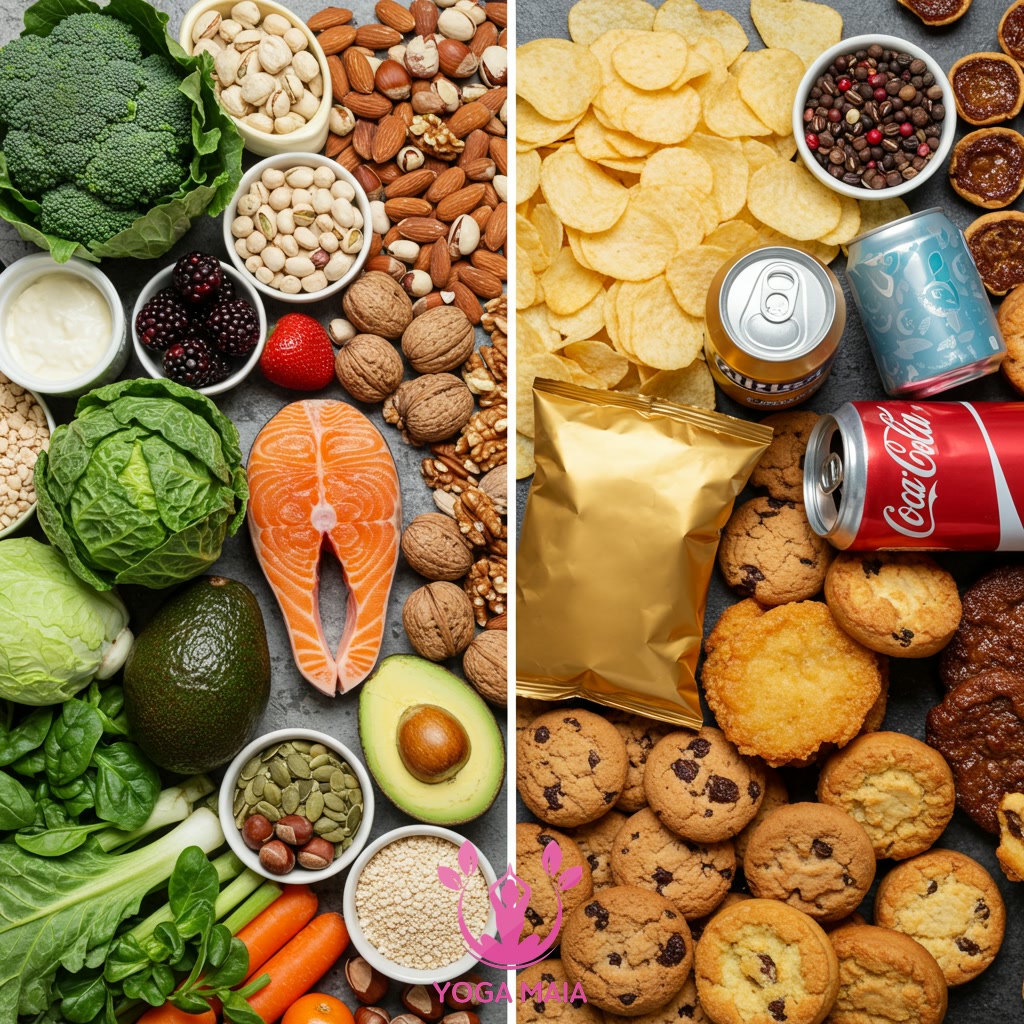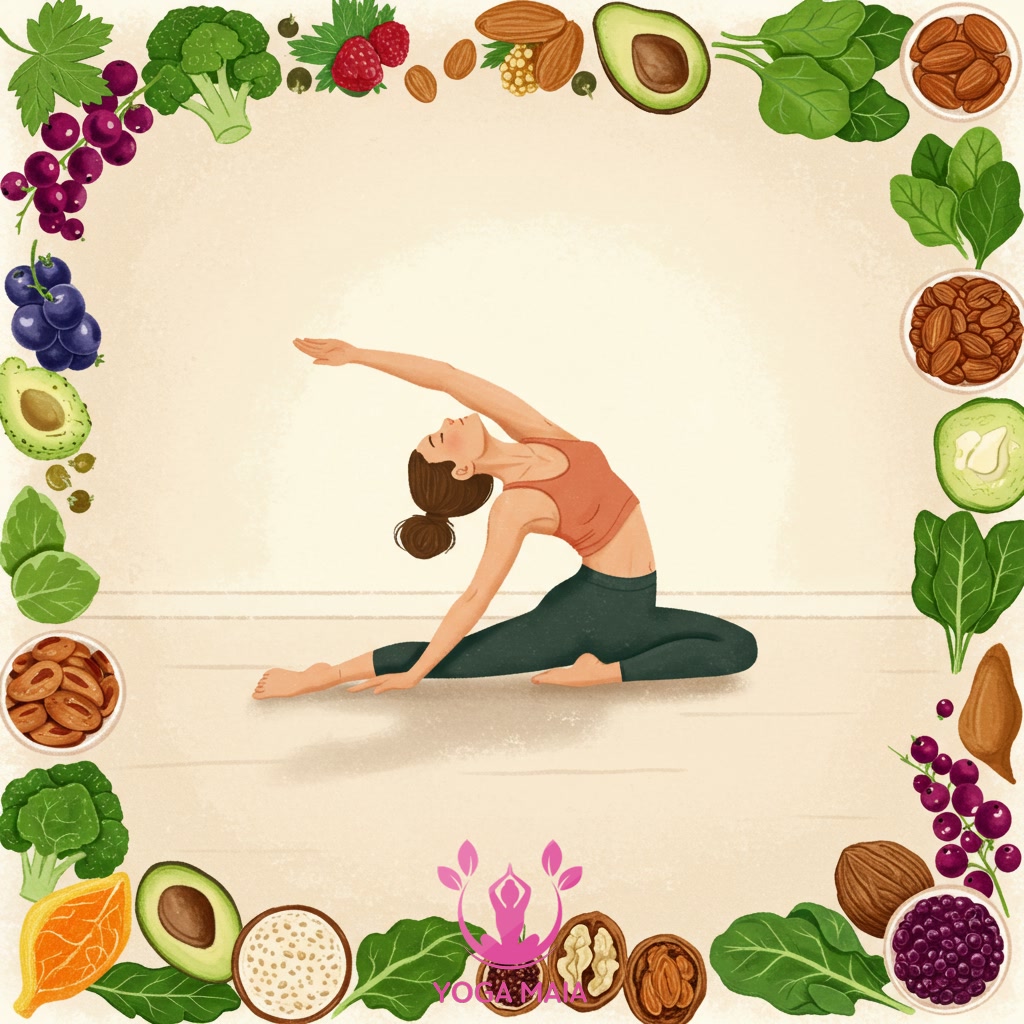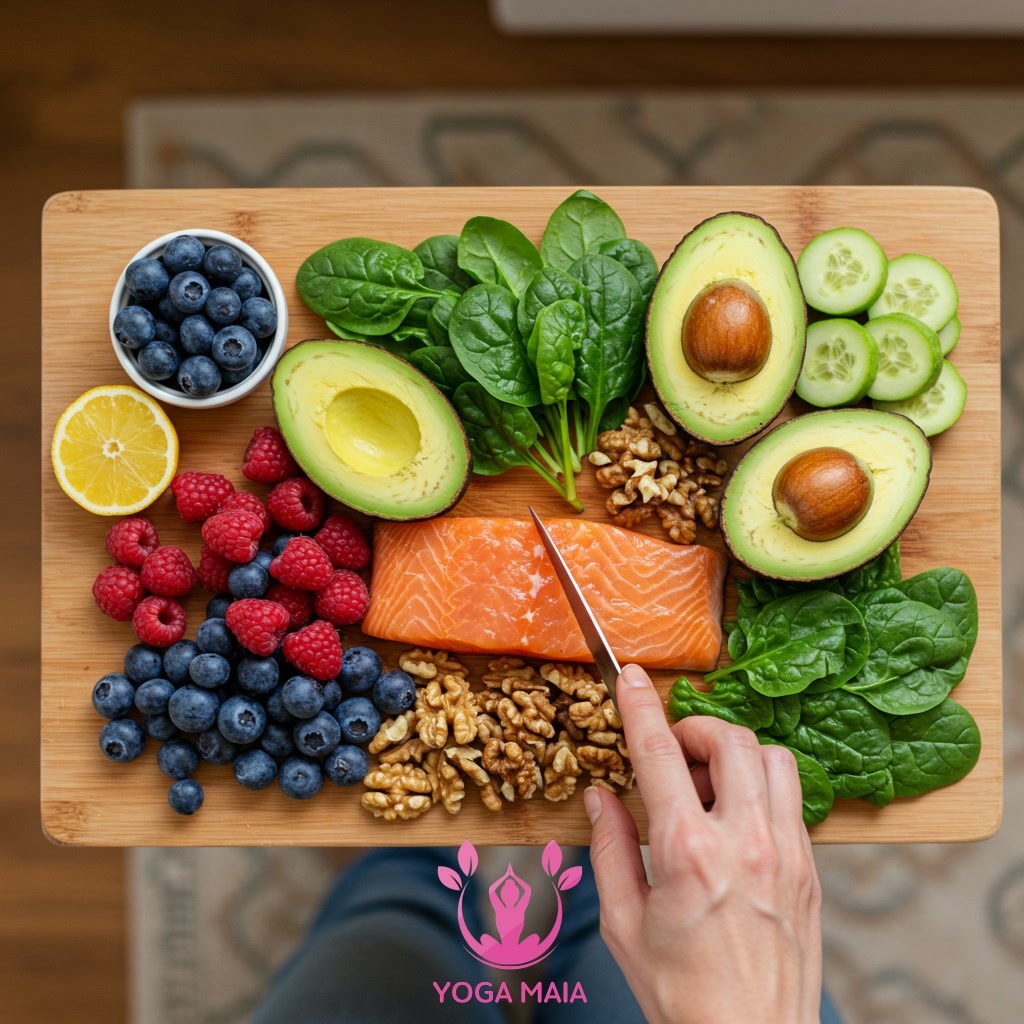Yoga Blog
Unlock Flexibility: Anti-Inflammatory Eating to Enhance Your Body and Yoga Practice

This content explores how anti-inflammatory eating can significantly improve physical flexibility. It details the benefits of reducing inflammation through diet for overall body health. The focus is on how these dietary changes can directly enhance one’s yoga practice, allowing for greater ease and depth in poses. The aim is to demonstrate how nutrition can be a powerful tool for unlocking physical potential and elevating the yoga experience.
Table of Contents
- Section 1: Understanding Inflammation and Its Impact on Flexibility
- Section 2: Principles of an Anti-Inflammatory Diet: What to Eat and What to Avoid
- Section 3: Fueling Flexibility: How Anti-Inflammatory Eating Benefits Your Body
- Section 4: Enhancing Your Yoga Practice Through Diet
- Section 5: Practical Steps to Adopt an Anti-Inflammatory Lifestyle for Yoga Enthusiasts
Section 1: Understanding Inflammation and Its Impact on Flexibility
Inflammation is a natural and vital process where your body responds to injury or infection, initiating healing. However, when this response becomes chronic, it can persist unnecessarily, affecting various tissues, including muscles, tendons, ligaments, and joints. Chronic inflammation often leads to persistent swelling, pain, and stiffness in these areas. This stiffness directly limits the range of motion around joints and reduces the elasticity of muscles, significantly impairing physical flexibility. For anyone engaging in physical activities like yoga, reduced flexibility due to inflammation can make poses more challenging, uncomfortable, and potentially increase the risk of injury. Understanding this fundamental link between inflammation and restricted movement is key to exploring how dietary strategies can help mitigate these effects and enhance flexibility.
 Understanding Inflammation and Its Impact on Flexibility
Understanding Inflammation and Its Impact on Flexibility
Section 2: Principles of an Anti-Inflammatory Diet: What to Eat and What to Avoid
Building upon the understanding that chronic inflammation can hinder physical function, adopting an anti-inflammatory diet is key. This dietary approach focuses on consuming nutrient-dense foods that help reduce inflammation markers in the body. Key components include an abundance of colorful fruits and vegetables, which are rich in antioxidants and phytochemicals; whole grains like oats and brown rice; lean protein sources such as fish high in omega-3 fatty acids, poultry, and legumes; and healthy fats from sources like avocados, nuts, seeds, and olive oil. Conversely, the diet minimizes or avoids foods known to promote inflammation, including processed snacks, sugary drinks, refined carbohydrates, excessive red and processed meats, and unhealthy trans and saturated fats. By making conscious choices about what you eat, you actively support your body’s ability to maintain a balanced inflammatory response, paving the way for improved physical ease and flexibility.
 Principles of an Anti-Inflammatory Diet: What to Eat and What to Avoid
Principles of an Anti-Inflammatory Diet: What to Eat and What to Avoid
Section 3: Fueling Flexibility: How Anti-Inflammatory Eating Benefits Your Body
Building upon the understanding that chronic inflammation can hinder physical function, adopting an anti-inflammatory diet is key. This dietary approach focuses on consuming nutrient-dense foods that work at a cellular level to reduce systemic inflammation throughout the body. By reducing inflammatory markers, this way of eating directly alleviates stiffness and pain in joints and muscles, improving their function and range of motion. It also supports faster muscle recovery after activity and enhances overall tissue health, making the body more resilient and less prone to injury. This foundation of reduced internal friction allows for greater ease of movement, enabling the body to unlock and express its natural potential for flexibility.
 Fueling Flexibility: How Anti-Inflammatory Eating Benefits Your Body
Fueling Flexibility: How Anti-Inflammatory Eating Benefits Your Body
Section 4: Enhancing Your Yoga Practice Through Diet
Building upon the understanding that chronic inflammation can hinder physical function, adopting an anti-inflammatory diet is key. This dietary approach focuses on consuming nutrient-dense foods that actively work to reduce inflammation throughout the body. By minimizing inflammatory responses, this way of eating directly enhances your yoga practice. Reduced inflammation means less stiffness and pain in joints and muscles, allowing for improved range of motion and greater ease in executing poses. You may find yourself able to move deeper into stretches, hold poses for longer with less discomfort, and experience smoother transitions between postures. Furthermore, this dietary shift can lead to increased energy levels and faster recovery after practice, enabling more consistent and effective yoga sessions. Ultimately, integrating anti-inflammatory eating provides a powerful foundation for unlocking greater physical potential and deepening your connection with your yoga practice.
 Enhancing Your Yoga Practice Through Diet
Enhancing Your Yoga Practice Through Diet
Section 5: Practical Steps to Adopt an Anti-Inflammatory Lifestyle for Yoga Enthusiasts
Building upon the understanding that chronic inflammation can hinder physical function, adopting an anti-inflammatory diet is key. This dietary approach focuses on consuming nutrient-dense foods that actively reduce inflammation, thereby improving tissue health and joint mobility essential for yoga. Practical steps include increasing your intake of colorful fruits and vegetables, rich in antioxidants and phytonutrients. Incorporate fatty fish like salmon, walnuts, and flaxseeds for omega-3 fatty acids. Choose whole grains over refined carbohydrates and opt for healthy fats such as olive oil and avocados. Limiting processed foods, sugary drinks, and excessive red meat are also crucial. Making these conscious food choices helps create an internal environment that supports greater flexibility and ease in your yoga poses.
 Practical Steps to Adopt an Anti-Inflammatory Lifestyle for Yoga Enthusiasts
Practical Steps to Adopt an Anti-Inflammatory Lifestyle for Yoga Enthusiasts












